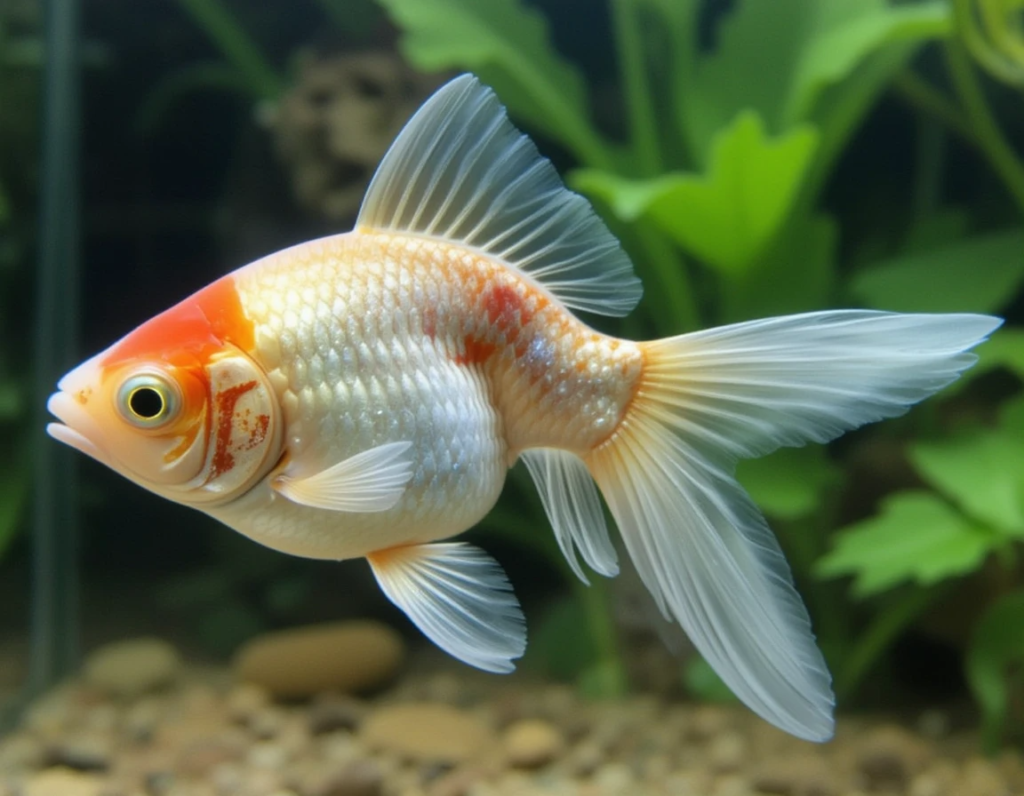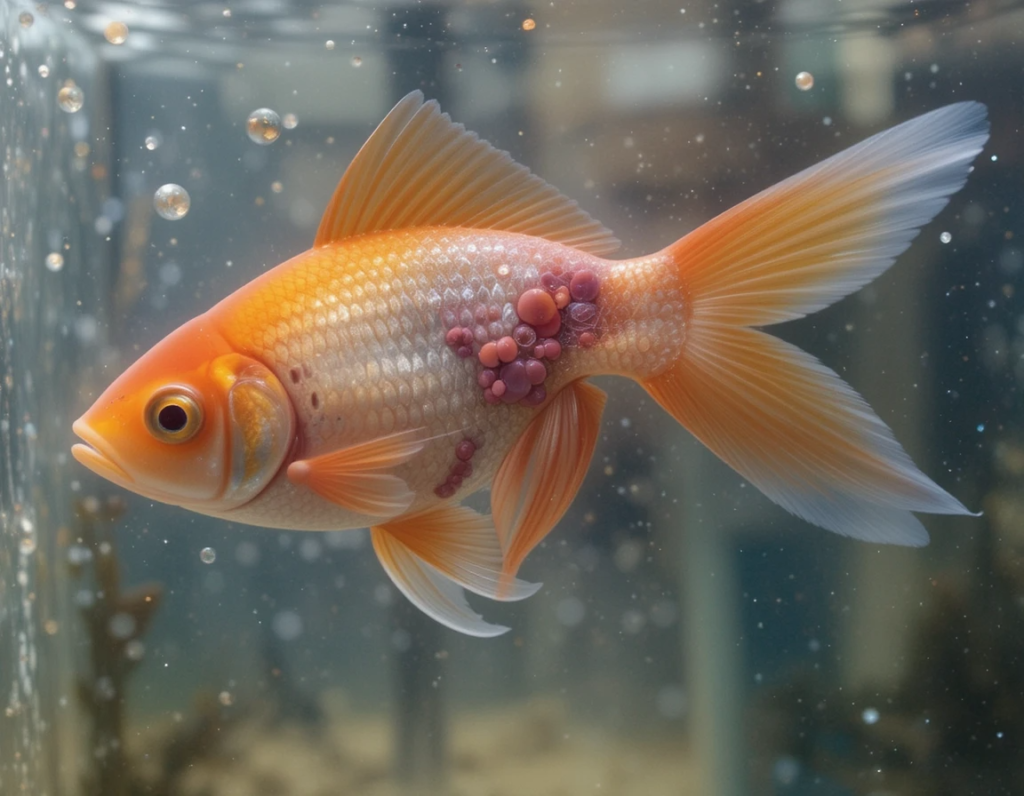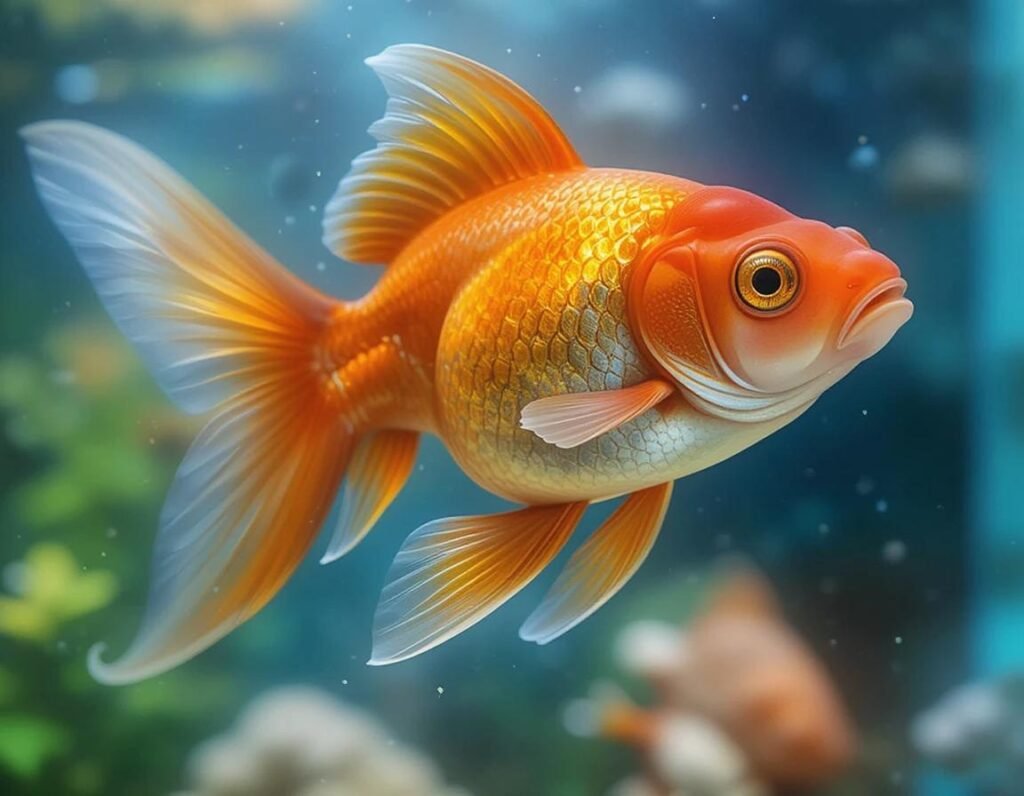
Goldfish are wonderful, peaceful creatures that can light up your tank with their vibrant colors and graceful movements. But, like all living things, they can sometimes get injured. One of the more common injuries that can occur in goldfish is a tail injury. If your goldfish has suffered a tail injury, don’t panic! With a little care and attention, your goldfish can heal and get back to swimming happily.
Let’s dive into how to care for your goldfish’s injured tail and what you can do to speed up the healing process.
What Causes Tail Injuries in Goldfish?
Before we get into healing, let’s quickly look at some of the causes of tail injuries:
- Sharp decorations in the tank: Sometimes, goldfish get too excited or curious and can injure themselves on rough rocks or sharp edges of decorations.
- Aggressive tank mates: If your goldfish is in a tank with more aggressive fish, they may nip at its tail.
- Accidental damage: It’s possible that your goldfish might have accidentally hit something hard in the tank while swimming too quickly or darting away from something.
Whatever the cause, rest assured that most tail injuries in goldfish can heal with the right care. Let’s take a look at how you can help your goldfish recover.
Goldfish Tail Injury Healing: Step-by-Step Care
1. Assess the Injury
First things first, take a good look at the injury. Is the tail just scratched, or is there a chunk missing? Is the wound bleeding? If it’s just a small scratch or tear, it might heal on its own in a week or two. However, if there’s severe damage or if the wound is deep and bleeding, you might need to act more quickly.
2. Isolate Your Goldfish (If Needed)
If the injury looks serious, it’s best to move your goldfish to a quarantine tank. This helps to prevent other fish from aggravating the injury. Plus, it makes it easier for you to keep an eye on the healing process. Just be sure the quarantine tank has clean, filtered water, and is set up with minimal decorations to avoid further injury.
3. Ensure Clean Water
The key to healing any injury is a clean environment. Ammonia, nitrites, and high levels of waste can cause stress and make healing more difficult. Make sure the water in the tank (or quarantine tank) is pristine:
- Perform regular water changes (about 25-30% every few days).
- Use a good quality filter to keep the water clean.
- Check the water parameters: pH, ammonia, nitrate, and temperature.
4. Add Salt for Extra Healing Power
For minor injuries, adding aquarium salt to the water can help speed up the healing process. Salt is known for its antiseptic properties and can help reduce the risk of infection. Make sure to follow the manufacturer’s instructions on how much salt to use for your tank size. Just don’t overdo it – your goldfish doesn’t need a salt bath like they’re at a fancy spa.
5. Monitor the Injury
Keep an eye on the tail injury. Look for signs of infection such as redness, swelling, or unusual discharge. If you see any of these symptoms, you may need to use antibacterial medication specific for fish. Always follow the instructions carefully when administering any treatments.
6. Feed a Balanced Diet
A healthy diet is essential for healing. Offer your goldfish high-quality fish food that is rich in vitamins and minerals to support its immune system. You can even add bloodworms or brine shrimp to provide extra nutrients for faster recovery. Just don’t overfeed your goldfish! A bloated fish isn’t a happy or healthy fish.
7. Keep Stress Levels Low
Stress can slow down the healing process. To keep your goldfish calm:
- Keep the tank quiet and peaceful. Avoid loud noises or sudden movements.
- Keep the lighting low in the quarantine tank so your goldfish feels secure.
- Avoid sudden water changes or drastic changes in temperature, as these can stress your fish out.
How Long Does It Take for a Goldfish Tail Injury to Heal?
Healing time varies depending on the severity of the injury and the care provided. Minor tail injuries might take anywhere from 1 to 3 weeks to heal, while more severe injuries could take a bit longer. Patience is key – just like humans, goldfish need time to heal.
When to Call in the Experts
If the injury seems to be getting worse or if the tail is showing signs of infection that aren’t responding to treatment, it’s time to call in a veterinarian who specializes in fish. They can provide you with the right medications or advice to help your goldfish recover.
Prevention is the Best Medicine
Of course, prevention is always better than a cure. To avoid future tail injuries:
- Check your tank decorations to make sure they’re fish-friendly. Avoid sharp edges or rough surfaces.
- Keep aggressive fish away from your goldfish to reduce the risk of nipping.
- Make sure your goldfish has plenty of swimming space so they don’t accidentally hurt themselves while darting around.
Final Thoughts: A Healthy Tail for a Happy Fish
Goldfish tail injuries can be worrying, but they’re usually treatable with a little TLC. By providing a clean, stress-free environment, a healthy diet, and proper care, you’ll help your goldfish heal and get back to swimming happily in no time.
And remember – goldfish are tougher than they look! A little TLC and patience go a long way when it comes to healing. Plus, your goldfish will be back to wagging its tail and looking fabulous before you know it.

FAQs About Goldfish Tail Injury Healing
1. How can I tell if my goldfish’s tail injury is infected?
Answer: Look out for redness, swelling, or unusual discharge. If the injury looks worse instead of better after a few days, infection may be the cause.
2. Can goldfish heal without medicine?
Answer: For minor injuries, your goldfish might heal just fine with clean water and a stress-free environment. For more severe injuries or infections, you may need medication.
3. Can a goldfish’s tail grow back after injury?
Answer: Goldfish can regenerate tissue, so if the injury is not too severe, their tail can heal and grow back. However, some tail damage may leave permanent scarring.
4. Should I move my goldfish to a hospital tank for healing?
Answer: Yes, a hospital tank or quarantine tank is the best way to isolate the injured goldfish, prevent further damage, and monitor the healing process.
By following these simple steps, you’ll be able to help your goldfish recover from a tail injury and keep them happy and healthy for years to come.
5. How can I help my goldfish avoid tail injuries in the future?
Answer: To prevent future tail injuries, make sure your goldfish’s tank is set up with smooth, rounded decorations. Avoid sharp rocks or rough surfaces, and ensure that your tank mates are peaceful. Aggressive fish can easily nip at a goldfish’s tail, so consider the compatibility of any new additions to the tank.
6. What should I do if my goldfish's tail injury doesn't heal?
Answer: If the injury isn’t healing or is getting worse despite your best efforts, it’s time to consult a veterinarian who specializes in aquatic animals. They can provide specific treatments, such as antibiotic or antifungal medications, that may be necessary to address infection or complications. In some cases, they might also be able to guide you on any underlying health issues affecting the healing process.
7. Can goldfish tails get infected even with clean water?
Answer: Yes, even in clean water, goldfish can still develop infections, especially if their immune systems are weakened due to stress, poor nutrition, or overcrowding. That’s why providing a stress-free environment, good nutrition, and proper tank maintenance is crucial in helping your goldfish avoid infections.
8. Should I change the water more frequently while my goldfish heals?
Answer: Yes, you should consider increasing the frequency of water changes while your goldfish is healing. Clean water helps prevent infection and promotes the healing process. Make sure to remove any debris from the tank regularly and check the water parameters (like ammonia, nitrites, and nitrates) to ensure a safe environment. Remember, your goldfish is trying to recover, and clean water is like giving them a cozy, stress-free hospital room!
9. Can stress make my goldfish's tail injury worse?
Answer: Absolutely! Stress is a sneaky villain in the world of fish care. It can weaken your goldfish’s immune system and make it harder for them to recover from injuries. To keep stress levels low, ensure your goldfish has plenty of space, a calm environment, and compatible tank mates. Also, avoid sudden changes in water conditions or tank decor, as these can send your goldfish into a frenzy, further aggravating the injury.
10. What if my goldfish keeps injuring its tail?
Answer: If your goldfish keeps injuring its tail despite a safe and well-maintained tank, it might be worth considering the possibility of an ongoing issue, such as aggression from tank mates or too much swimming into sharp decorations. You could try adding more hiding spots, plants, or decorations that help break up the space and give your goldfish a place to retreat if it feels threatened. Also, check if the tank size is appropriate—goldfish need plenty of room to swim comfortably.


